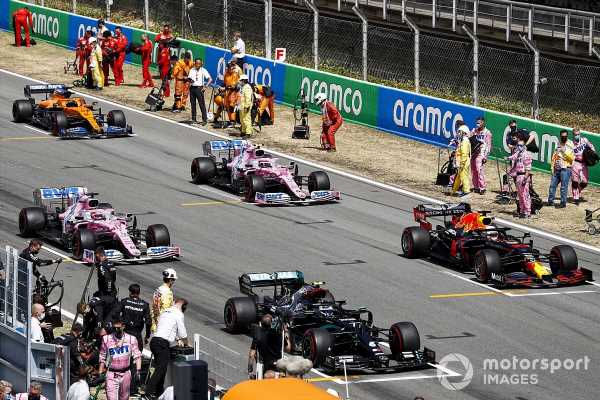The FIA’s upcoming clampdown on Formula 1 power unit mode usage is in part an attempt to stop manufacturers gaining performance by claiming reliability modifications, it has emerged.
In the technical directive issued last week to confirm the new restrictions – which come into force at the Italian GP – the FIA makes reference to Appendix 4 of the F1 sporting regulations, which covers the current power unit homologation period that runs until 2025.
The rules specify that manufacturers can request FIA approval for upgrades “for reliability, safety, cost saving, car installation and supply issues.”
In the technical directive the FIA says that requests for reliability fixes can reflect the fact that the manufacturers are pushing the limit on performance, with for example the use of qualifying modes, rather than fixing genuine problems.
The TD notes: “We believe that in many cases reliability issues are inevitable consequences of running the PU outside of its reliable operational limits in some moments of an event, and such reliability requests are in fact an indirect means of allowing more of the higher performance modes to be used during the life of a PU.
“In many cases it is hence virtually impossible for the FIA to satisfy itself that all change requests are solely for the purposes permitted by the regulations and have no effect on performance.”
As previously reported the FIA cites two other rules as justification for the new mode restrictions, namely Article 2.7 of the technical regulations, which relates to the duty of teams to demonstrate compliance with the rules, and Article 27.1 of the sporting regulations, which requires the driver to drive the car “alone and unaided.”
Expanding on the latter the FIA notes that “the use of PU modes (and especially ICE modes) has become an essential part of the management of the reliability vs performance of the PU over its racing life, and that it has a direct primary effect on the performance of the PU over a session, an event and over the life of the PU.
“Moreover, we observe that, in that process, the driver is mainly executing instructions issued by the team, with no or little direct control or knowledge of the complex levers being actioned.”
The FIA stresses that the restrictions are focussed on ICE modes, which it defines as “a set of control parameters which determine the output power of the ICE and the way it operates, not linked to changes of climatic conditions or to power unit protections that may be exceptionally triggered.”
From the Italian GP onwards the same ICE mode must be used from the start of qualifying to the end of the race, but in effect only when a driver is running flat out.
Different modes can be used for in and out laps in qualifying, and any lap that is 20% slower than pole. In the race the laps to the grid, the lap after the chequered flag and any laps run under safety car or virtual safety car conditions are also excluded.
While the same mode has to be used throughout qualifying and the race on a given weekend, the mode chosen can vary between events.
ICE parameters can also change within a lap, but the same pattern has to be repeated on every lap.
Reflecting an earlier TD that covered parity between customer and works teams all engines from the same supplier must be run in the same mode on a given weekend.
Some allowance will be made for power units that are already in use, and which may have different levels of mileage and/or damage that a team has to take into account when they are operated.
However, any fresh engines introduced from this weekend in Belgium – a race ahead of the actual restrictions – will have to run the same modes as other examples from the same supplier when the new rules are applied from Monza onwards.
In an extra concession to reliability teams can change modes during a race if they encounter a problem. However, they must inform the FIA “without delay,” and be able to demonstrate that something specific went wrong.
Teams are not allowed to plan such moves in advance in an attempt to extend the life of an engine, and after the mode change there has to be a significant drop in performance, and no return to the original mode is allowed within the race.
The FIA also clarifies that the overtake button cannot be used in qualifying, and in the race can only be used in relation to a change of MGU-K deployment on straights, and for activation of the wastegate mode.
The TD makes it clear that any transgressions will be taken seriously: “In situations where a change of ICE mode is deemed to have taken place outside the provisions of this technical directive, the car in question will be reported to the stewards, as will any attempt to deliberately hide or manipulate data, sensor or actuator signals relevant for our analysis.”
Related video
Source: Read Full Article

